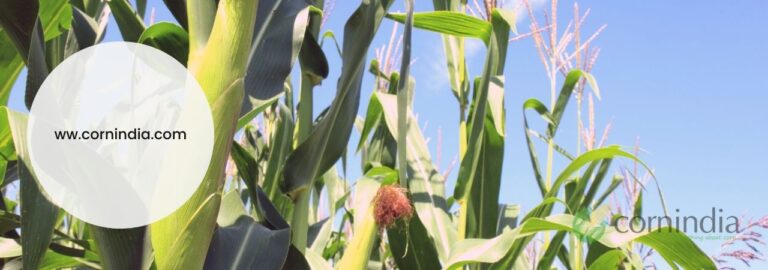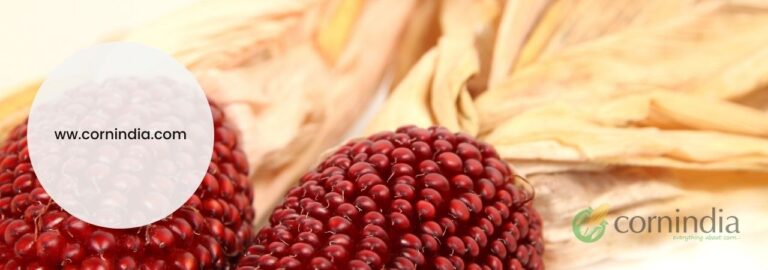
Per se performance and genetic behavior for Quality Characters in Qpm-Genotypes traits viz, 100-kernel weight, protein per cent, tryptophan and lysine in protein, specific gravity and grain yield were studied in seven selected QPM hybrids in two locations during kharif 2000. Specific gravity, tryptophan and lysine content in protein and protein per cent found as primary quality traits to improve QPM genotypes along with yield. F1 crosses CML-176 x CML 186 and CML-177 x CML-176 were identified as best high yielding Quality Characters in Qpm-Genotypeshybrids and proposed for their multi-location testing before commercial utilization.
Key words: Tryptophan, lysine, maize, carbohydrates, per se profile, Quality Characters in Qpm-Genotypes
Maize is the principal source of carbohydrates and protein in the areas where it is used as staple food. However, because of deficiency of lysine and tryptophan and presence of excess leucine, the poor nutritional quality of maize protein was long back recognized (Osborne and Mendel, 1914). With the discovery of mutant allcles opaque-2 (0-2) (Mertz et al, 1964), floury-2 (fl-2) (Nelson et al., 1965) genes presently major use in the QPM programme along with other genes viz., 0-7, 0-6, fl-3, mucronate and defective endosperm have increased opportunities immensely for the improvement of Quality Characters in Qpm-Genotypes protein maize since these mutant genes alter the amino acid profile (lysine, tryptophan and other amino acids) and composition of endosperm protein in corn.
This aspect was further strengthened by the development of modified hard endosperm genotypes (Paez et al., 1969) and different breeding procedures to develop different types of QPM germplasm (soft endosperm or opaque-2 based germplasm), genetic modifiers, hard endosperm or their different combinations etc.) and their utilization in the development of high yielding Quality Characters in Qpm-Genotypes maize hybrids (Vasal 1980 and Vasal et al., 1984 and 1994) comparable With Honnal (non QPM) high yielding com hybrids. Therefore, ill the present investigation, an effort was made to collect information on the per se performance, quality characters and their genetic behavior in few selected QPM hybrids known for their heterotic combinations and compared with released best QPM cultivars.
Table of Contents
Materials and Methods
The materials for the investigation comprised of seven selected Quality Characters in Qpm-Genotypes (5 QPM hybrids + 2 checks) raised in two locations with randomized block design replicated four times during kharif season of 2000 both at College of Agriculture, Rajendranagar, Hyderabad(location 1) and at Agricultural Research Station (Maize), Amberpet, Hyderabad (location 2). Each genotype was sown in two rows of 5.0 m length adopting a spacing of 75 cm between rows and 20 cm between plants within a row.
The crop was provided with fertilizer dose of 120:60:50 N, P, K in kilograms per hectare and followed all recommended package of practices to raise a successful maize crop. Observations on the whole plot basis for each entry was recorded for grain yield, while five competitiveQuality Characters in Qpm-Genotypes plants were randomly selected from each entry for recording data on 100-kernel weight and specific gravity.
Analysis of Samples
Pericarp and embryo removed from the maize samples with the help of pincer and scalpel. Only endosperm was collected. The samples were coarse grinded by hand grinder and defatted by Soxhelet apparatus adding petroleum either. The moisture content in the sample was determined by the method A.O.A.C. (1990). The flour of these varieties was prepared by cyclone sample mill protein content was determined according to the method A.O.A.C. (1965). Tryptophan was estimated by papain hydrolysis method Hernandez and Bates (1965).
Lysine was determined by method Tsai et al., (1972) and Villegas, E. and Martz, E.T. (1971). Specific gravity estimated by Gustafson et al., (1970) . Means were computed for two locations and the mean pooled data were analysed for RBD analysis as described by Panse and Sukhatme (1978). The phenotypic and genotypic coefficient of Quality Characters in Qpm-Genotypes variation by adopting the formula of Burton and Devane(1953), broadsense heritability using the formula given by Hanson et al., (1956) were computed. Genetic advance was computed based on broadsense heritability values in accordance with the formulae given by Jhonson et al., (1953).
Results and Discussion
Analysis of variance revealed highly significant differences for all the five Quality Characters in Qpm-Genotypes, indication inherent variability in the material taken up for the investigation (Table-1). From coefficient of variation, it is clearly observed that, the variation was maximum for 100-seed weight (8.57%), followed by yield per plot (6.14%), tryptophan in protein (5.48%), percent lysine in protein (3.49′)0), specific gravity (4.73%) and the lowest being for protein percent (3.04%). Similar ‘0’ the present investigation significant difference and variation for protein per cent and yield characters were also reported by Satyanarayana (1990) and Chandra Mohan (1999).
Table.1. Mean per se performance and analyzed data on grain yield and quality characters in selected hybrids of QPM-genotypes.
| Pedigree | 100-kernel Weight (g) | Quality Parameters | Specific Gravity | Grain yield (kg/plot) | Pedigree | |
| Protein (%) | Tryptophan (g/16g N) | Lysine (g/16 N) | ||||
| CMJ..,-186 x CML-149 | 24.00 | 7.50 | 0.72 | 2.81 | 1.13 | 2.40 |
| lCIvIL-142 x CI-IL-I501 x CML 186 | 23.00 | 6.78 | 0.68 | 2.26 | 1.09 | 2.35 |
| CML-176 x CML-186 | 28.00 | 6.75 | 0.75 | 2.93 | 1.08 | 1.08 |
| CML-175 x CML-176 | 23.00 | 8.05 | 0.62 | 2.50 | 1.10 | 1.10 |
| CML-177 x CML-176 | 23.95 | 6.86 | 0.78 | 3.00 | 1.13 | 1.13 |
| PRO-311(Local Check) | 28.00 | 7.03 | 0.51 | 2.10 | 1.22 | 1.22 |
| Shakti-1 (QPM( Local Check) | 21.86 | 8.09 | 0.72 | 2.93 | 1.08 | 1.08 |
| Mean | 24.54 | 7.29 | 0.68 | 2.65 | 1.12 | 2.44 |
| Treatment MSS | 18.25** | 1.62 | 0.025 | 2.75 | 0.007** | 0.17** |
| Error MSS | 4.42 | 0.04 | 0.001 | 0.0086 | 0.002 | 0.02 |
| C.D. at 5% | 2.64 | 0.26 | 0.044 | 0.161 | 0.065 | 0.174 |
| CV (%) | 8.56 | 3.04 | 5.48 | 3.49 | 4.73 | 6.14 |
The estimates of various genetic variability parameters are presented in Table-2. Hundred seed weight exhibited higher Quality Characters in Qpm-Genotypes (4.60) as well as phenotypic (9.03) variances, compared with other traits revealing existence of higher magnitude of variability for this trait, and indicated its possible prime role in the selection programme for improvement of grain yield in maize. This corroborates the statement made by Manmohnan (1984) and Satyanarayana (1990)
Table.2.Genetic studies for quality characters and yield in selected hybrids of QPM
| Character | Variance | Co-efficient variation | Herit ability (%) | Genetic advance | GA as % over mean | ||
| Vp | Vg | PCV | GCV | ||||
| Protein(%) | 0.5706 | 0.5267 | 10.356 | 9.949 | 92.31 | 1.4360 | 19.69 |
| Tryptophan (g/16 N) | 0.0094 | 0.0079 | 14.176 | 13.075 | 85.06 | 0.1696 | 24.84 |
| Lysine | 0.0074 | 0.0066 | 10.280 | 9.680 | 88.80 | 0.5100 | 19.24 |
| Specific gravity | 0.0265 | 0.0237 | 14.553 | 13.763 | 89.43 | 0.2999 | 26.81 |
| 100-seedWeight (g) | 9.0327 | 4.6108 | 12.247 | 8.750 | 51.04 | 3.1599 | 12.88 |
| Yield per plot(kg) | 0.0725 | 0.0500 | 11.020 | 9.150 | 68.96 | 0.3825 | 15.66 |
The higher values of Quality Characters in Qpm-Genotypes coefficient of variation were observed for traits ‘viz., specific gravity (14.553, 13.763) , tryptophan percentage in protein (14.176, 13.075) and lysine percentage in protein 910.280,9.680 indicating a good deal of genetic variability in these characters and thus, suggesting, direct selection for these three characters would also b effective. Other traits viz., 100-seed weight (12.247, 8.750), yield per plot (11.20, 9.150) and protein percentage (10.356,9.949) exhibited relatively moderate values of PCV and GCV indicating more influence of environment interaction on the expression of these characters. Such observations were also reported earlier by ManMohan (1984) and Satyanarayana (1990 and 1996)
Estimates of high heritability combined with higher genetic advance as percent over mean for traits, specific gravity (89.43, 26.81), tryptophan (85.06, 24.84) lysine (88.80, 19.24) and protein percent (92.31, 19.69) indicated that these characters are largely governed through the additive effect of genes and improvement in these characters may be achieved through simple phenotypic selections. Similar results were also reported by satyanarayana (1990, 1995) and Chandramohan (1999), for protein and yield contributing characters.
Johanson et at 91995) have suggested that, heritability estimates along with genetic advance shall be more helpful in predicting genetic gain under phenotypic selection than heritability estimates alone. The other characters such as, yield per plot (68.96, 15.66) and 100-seed weight(51.04, 12.88) exhibited moderate values of heritability coupled with moderate to low values of genetic advance, indicating that these traits were mainly under the influence of environmental interaction with non-additive and epistatic gene effects(Panse 1957).
Hence, from the present investigation it was evident that, while going for selection in quality protein maize genotypes more emphasis should be given for the characters specific gravity, tryptophan, lysine and protein per cent as they exhibited higher variability, heritability coupled with genetic advance. Further, among the selected crosses viz., CML-176 x CML-186 and CML_177 CML-176 which possessed higher values of tryptophan, lysine, specific gravity, i.e. quality protein,100-seed weight and also good grain yield found significantly superior compared with Shakti-1, the best QPM released variety in the country.
Whereas QPM hybrid CML-176 x CML-186 which recorded highest plot grain yield of 2.70kg, in addition with all high Quality Characters in Qpm-Genotypes traits were compared with one of the best normal popular high yielding maize hybrid (PRO-311). Therefore, it is worthwhile to evaluate these two QPM hybrids under multi-season and multi-location testing to confirm their superiority in yield coupled with high Quality Characters in Qpm-Genotypesprotein before their release for commercial cultivation as QPM hybrids.
References
- A.O.A.C.20th ed. Washington Dc.USA (1990), 566.
- AO.A.c. 10th ed. 744-745 (1965).
- Burton, GW. And Devane, E.M. (1953). “Estimating heritability in tall fescue (Festuca anmdnacca) from replicated clonal material”. Agron. J, 45: 478-481.
- Chandra Mohan, Y. (1999). “Variability studies for oil and grain yield in maize genotypes. M.Sc. ., thesis submitted to ANGR Agri. Dniv., R.Nagm, and Hyderabad-30.
- Gustafson, R.J. and GE. Hall (1970). Density and porosity and shelled com during Trnns. ASAE 15: 523-525.
- Hanson, G.H., Robinson, U. F and Comstock, R.E., (1956), Biometrical studies of yield in segregating population of Korean Lespeds, Agron. J.48: 268-272.
- Hemandoz., H.and Bates, L.S, (1969). A modified method for rapid tryptophan analysis of maize Research Bulletin No.13 CIMMYT.
- Jhonson, H.W.Robinson, H.P. and Comstock, R.E. (1955). “Estimation of genetic and environmental variabilitly in soyabean “. Agron. J. 47: 314-18
- Manmohan, E. (1984). “Evaluationof the combining ability and association of characters in inbred lines of maize”‘, M.Sc. thesis submitted to Andhra Pradesh Agricultural University, Hyderabad.
- Mertz, E.T. Bates, L.S. and Nelson, O.E. (1964).”Mutant gene that changes protein composition and increase losing content of maize endosperm” Science 145, 279.
- Nelson, O.E. Mertz, E.T.and Bates, L.S. (1965). “Second mutant gene affecting the amino acid pattern or maize endosperm proteins” Science 150, 1469.
- Osborne, TB. And Mendel, LB. (1914). “Amino acids in nutrition and growth” 1.Biol, Genet.17:325.
- Paez,A.V. Helm, J.L and Zuber, MS. (1969). “Lysine content of opaque-2 maize kernels having different phenotypes”. Crop Sci.9:251.
- Pause, VG (1957) “Genetics of quantitative Quality Characters in Qpm-Genotypes in relation to plant breeding”. Indian J.Genet. 17: 318-28.
- Panse,Y.G. and Sukhatme, P.Y.(1978) “Statistical methods for Agricultural workers” ICAR, New Delhi.
- Satyanarayana. E. (1990). “Genetic analysis of yield and resistance to charcoal rot in maize” Ph.D. thesis submitted to Andhra Pradesh Agricultural University, Hyderabad.
- Satyanarayana, E. (1995). “Heritability and genetic advance of grain yield under turcicum leaf blight stress in maize”. Cur, Res. 24: 81-82.
- Tsai.C.Y.Hansel, L.W. and Nelson, O.E. (1972). A colorimetric method of screening maize seeds for lysine content. Cereal Chem. 49: 572-579.
- Vasal. S.K. (1994).”High quality protein corn” P. 80-121. In AR. Hallaver (ed). Specially corn, CRS Press. Boca Raton. F1.
- Vasal , S.K. Villegas, E.Bjamason, M. Gelaw, B. and Goertz, P. (1980). Genetic modifiers and breeding strategies in developing hard endosperm opaque-2 materials, in improvement of quality traits of maize for grain and silage use “. Palmer, W.G. and Phipps, R.H.eds, Nighoff, The Hague, p-37.
- Vasal, S.K., Villegas, E., Tang, C.Y. Werder, J. and Read. M. (1984). Combined use of two genetic systems in the development and improvement of quality protein maize Kulturpflauze: 32:17.
- Villagas, E. and Mortz, E.T. (1971). Chemical screening method of maize protein quality at CIMMYT Res. Bull. No.20 CIMMYT Londres 40 Mexico 6 D.F.
Authors:
Om Prakash, E.Satyanarayana, P.Shanti, and R.Sai kumar
Directorate of Maize Research, Indian Agricultural Research Institute, New Delhi-110012






